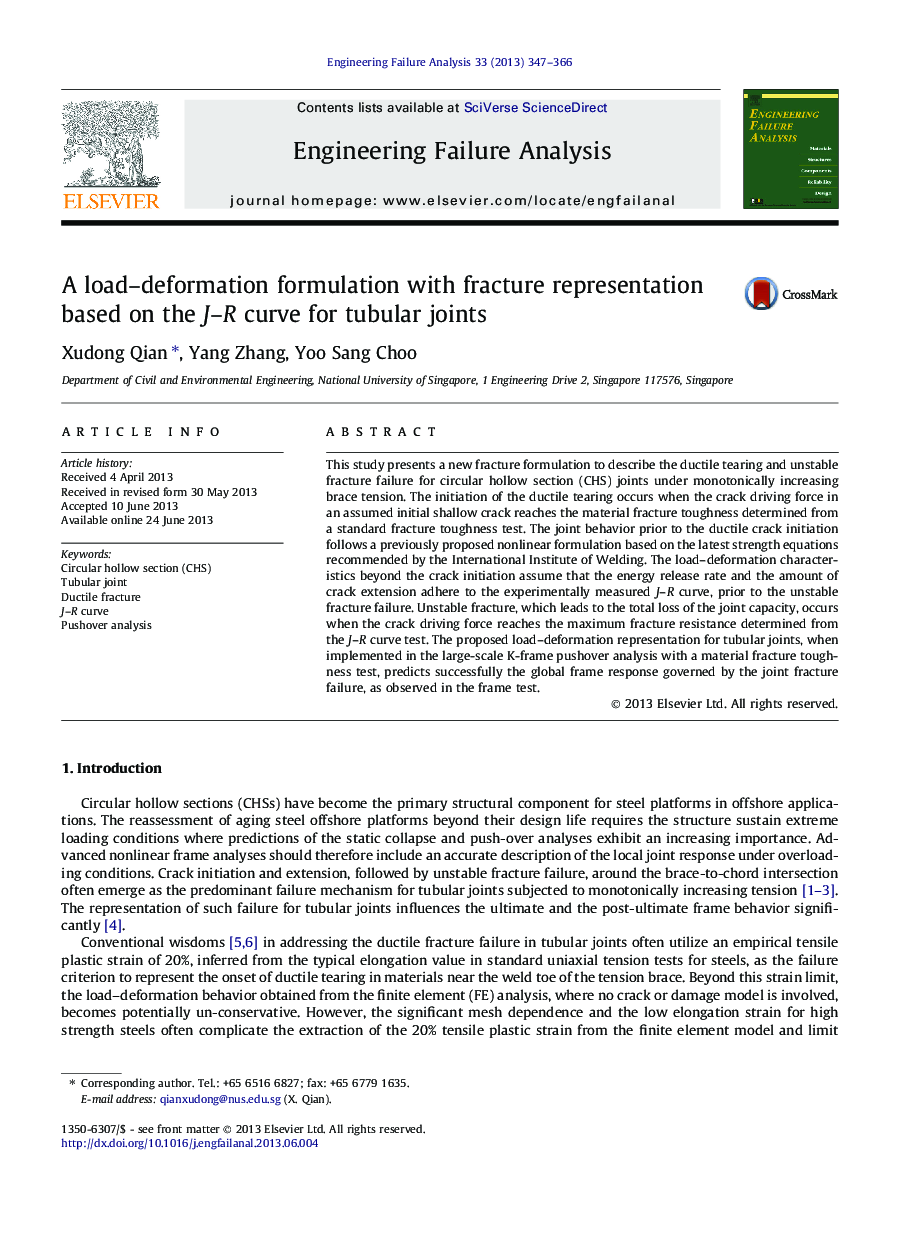| Article ID | Journal | Published Year | Pages | File Type |
|---|---|---|---|---|
| 7168542 | Engineering Failure Analysis | 2013 | 20 Pages |
Abstract
This study presents a new fracture formulation to describe the ductile tearing and unstable fracture failure for circular hollow section (CHS) joints under monotonically increasing brace tension. The initiation of the ductile tearing occurs when the crack driving force in an assumed initial shallow crack reaches the material fracture toughness determined from a standard fracture toughness test. The joint behavior prior to the ductile crack initiation follows a previously proposed nonlinear formulation based on the latest strength equations recommended by the International Institute of Welding. The load-deformation characteristics beyond the crack initiation assume that the energy release rate and the amount of crack extension adhere to the experimentally measured J-R curve, prior to the unstable fracture failure. Unstable fracture, which leads to the total loss of the joint capacity, occurs when the crack driving force reaches the maximum fracture resistance determined from the J-R curve test. The proposed load-deformation representation for tubular joints, when implemented in the large-scale K-frame pushover analysis with a material fracture toughness test, predicts successfully the global frame response governed by the joint fracture failure, as observed in the frame test.
Related Topics
Physical Sciences and Engineering
Engineering
Industrial and Manufacturing Engineering
Authors
Xudong Qian, Yang Zhang, Yoo Sang Choo,
